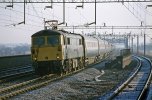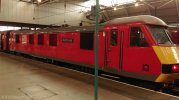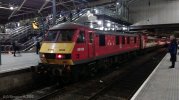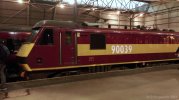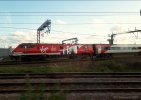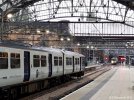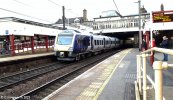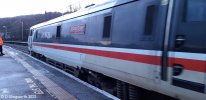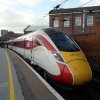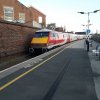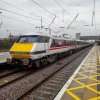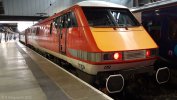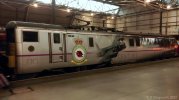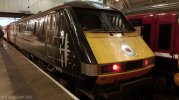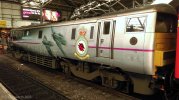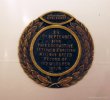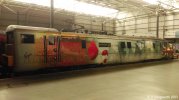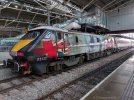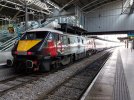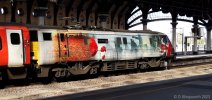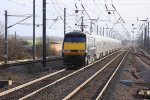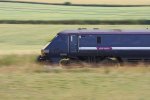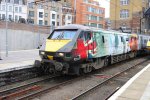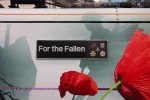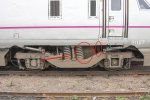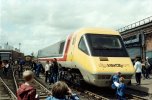And, some of the 91/APT design concepts went into the TGV/Eurostar and later Pendolino's. Folks claim the APT was a failure, not so, it spawned a whole new generation of technology. The class 91 and Mk IV body profile also has origins in tilt body, the shape allowed tilt capability (if it was ever developed) with the narrower roof line.
I have an unscanned picture somewhere of the APT passing Crewe, ironically taken by my younger brother as I'd gone to the gents, he didn't know whether to use my camera or not (in case I shouted at him) but decided to so that I couldn't caller him a fibber for seeing the APT when I hadn't, I later saw it at Stafford in the sidings and I'm sure I've a picture of that too, somewhere!
The crucial design change in the APT was the traction motor, traditionally mounted in the bogie which led to higher primary unsprung mass (Axle hung) and higher secondary mass (motor contributes to whole bogie mass) and limited it's physical size and thus power.
The APT and later 91 mounted the motor on the underside of the body at 90° to convention, suddenly you could make motors over twice the size with corresponding increase in power. The motors are offset off the centre line so that the drive shafts can pass each other, thus the motors are closer to the bogie centre, drive shafts are shorter and the whole unit more compact. Removing the motors releases several tons off the bogie weight which means it can be lighter and more track friendly, it also removes a lot of the axle hung weight (primary unsprung mass) as the revised hollow shaft drive gear box is significantly lighter.
When class 86 (AL1-5 were a totally different design of floating 'quill' drive, it's self not perfect and the Achilies heel of all the early classes, more on that another time of folks are interested) were introduced they had a primary unsprung mass of just over three tons I think, they smashed the PW to bits and were soon limited to 80 mph. Only revised bogie suspension and application of SAB wheels allowed them to go back to 100. By comparison the APT, 91 and Eurostar the unsprung mass is in the region of 1-1,25 tons if I remember correctly. The 86/1 (I think), 87 and 90 had hollow shaft drives to keep unsprung mass down, I don't think the 86/2 had the hollow shaft drive, just relying on the SAB wheels and redesigned bogies with flexicoil springs.
The other change was braking, on the APT and 91 the brake disc is mounted on the tail end of the motor and it's massive, on the 91 it's a conventional disc, on the APT a enclosed water/glycol impeller type brake, clever design but not ready for production and one of the biggest Achilles heels of the APT. TGV and Eurostar motors are even bigger and mounted higher up inside the loco body.
I've over exposed this 91 bogie, the large circle is the number 2 traction motor which drives the trailing axle, the number 1 is diagonally on the other side driving the front axle, the small ellipse is the vented brake disc. Both motors are secured to the underside of the body and hang down inside a cavity in the middle of the bogie, there being no central pivot as such; tractive forces are I think transmitted by torsion bars attached between the bogie end beams and body underside, but I've personally not seen that or can find written proof at this moment.
View attachment 185900

